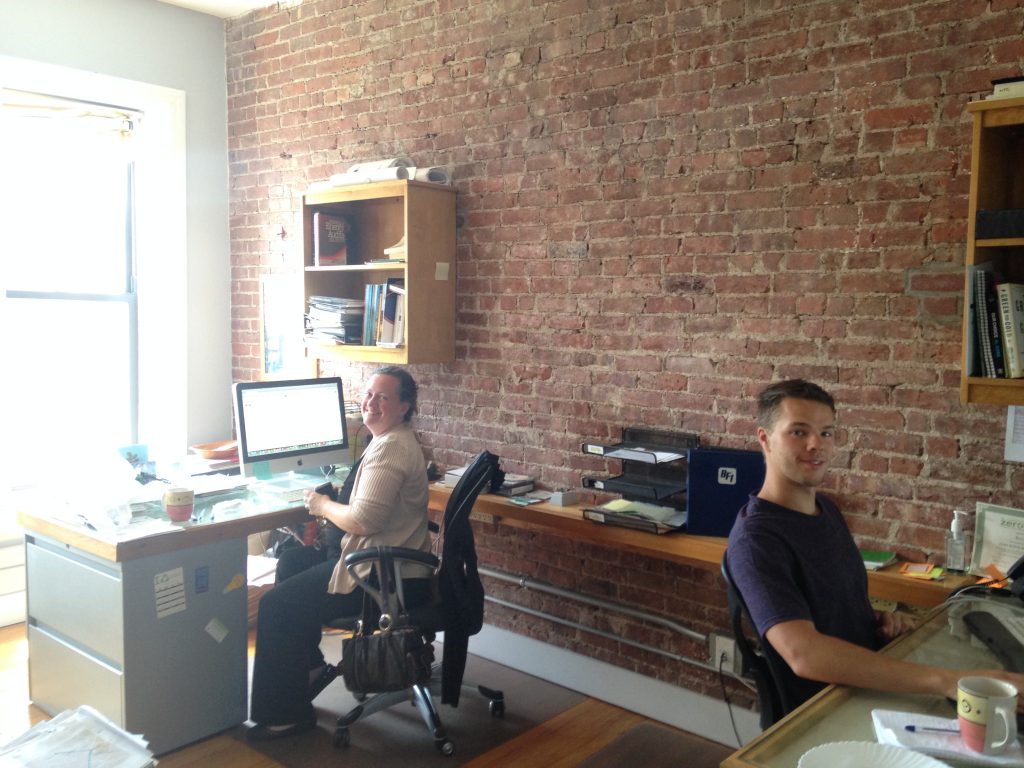
Daylight Hour is an annual global energy efficiency campaign that encourages businesses worldwide to turn off their office lights for just one hour during one day in June. Over the years, the campaign has been a fun way for our office to show off how this simple, energy efficiency habit can add up surprising quickly in terms of savings. We documented our Daylight Hour effort in a case study (see below), which is also featured at the Building Energy Exchange website.
Will one hour of daylight make a difference? You’d be surprised at how this one simple act can spark a bigger change. Read our case study below, then consider taking part in this year’s Daylight Hour campaign. You might even get an award (Great Forest received the “Gear Head” award for best monitoring and analysis, and the “Social Butterfly” award for best social media outreach in 2016 and 2017!)
But you don’t even need to wait for the campaign each June to start. Go ahead and turn off the lights whenever you can and work by daylight for a quick and easy boost in energy savings. Or implement something like Great Forest’s Daylight Fridays, where we officially encourage the office to work by daylight each Friday. Try it.
Case Study: Daylight Hour Adds Up For Easy Energy Savings Boost At Great Forest
Summary:
Great Forest’s participation in Daylight Hour triggered not only energy savings but also prompted increased engagement among employees stemming from the thrill of coming up tops in the Daylight Hour competition.
Following our success, we turned Daylight Hour into Daylight Fridays, expanding our energy saving efforts year-round, and beyond lighting.

What we did:
Great Forest’s NYC office occupies a 110-year-old brownstone in historic Central Harlem. Daylighting is plentiful due to skylights and east facing windows, and minimal shading from neighboring properties. As such, our office lights are usually off for a good amount of time each day, even before we began taking part in Daylight Hour.
So to really make a difference in energy savings, we decided that we would not just turn off the lights, but also take into account cooling to make an impact on the aggregated total. The Great Forest energy team then went floor to floor to make adjustments in our two-pronged effort to curtail energy use.
While the upper floors received plenty of daylight, they also predictably gained the most heat during summer afternoons, particularly in storage areas (where the thermostat is located), which happen to be remote from the work areas. This, along with our west-facing windows, which collect the most late afternoon heat, resulted in over-cooling of the rest of the building, since the cooling system was making adjustments for this area. So we decided to change the set-point and operate windows more frequently, and to invest in room darkening shades for the upper floors. Ultimately, the shades are what is probably making the most impact on the property.
Results:
Results from both our managed cooling efforts and limited lighting during Daylight Hour (June 17, 2016) and the days following were impressive: we saved more than 25% (500kWh) year over year (June 2015 compared to June 2016) in total kWh usage, and over 56% (1.3 kW) in peak kW demand billed by Con Edison. We have to note that luck was also on our side as some of the high heat days of summer 2016 fell on weekends.
Conclusion:
Lights and automated heating/cooling systems are so much a part of our daily working life that in the majority of offices across the country, workers do not even think about it. The lights and heat/air are on when we get to the office, and they often remain on even if there is bright daylight streaming through our windows, or if it gets too cold.
“We need to get get more people to pay attention to their immediate surroundings,” says Sheila Sweeney, Great Forest’s Director of Energy Services.
“Part of what we do at Great Forest is to work closely with C-suite levels at property management firms around the US to forge change in the mindsets of their employees and the larger community. Now we’ve done it within our own offices with Daylight Hour. We made sure that everyone was able to join in the energy saving conversation. We made it fun and memorable, and we simply built on that success by making awareness a year-round energy saving policy.”
“If you work in a large office where controls are not within your reach, talk to your sustainability officer or facility manager. The solution could be as simple as turning a dial elsewhere in the building.”
Learn More:
Awards: Great Forest Wins Daylight Hour Award For Best Monitoring And Analysis
Great Forest Wins Daylight Hour Award, Announces Daylight Fridays
